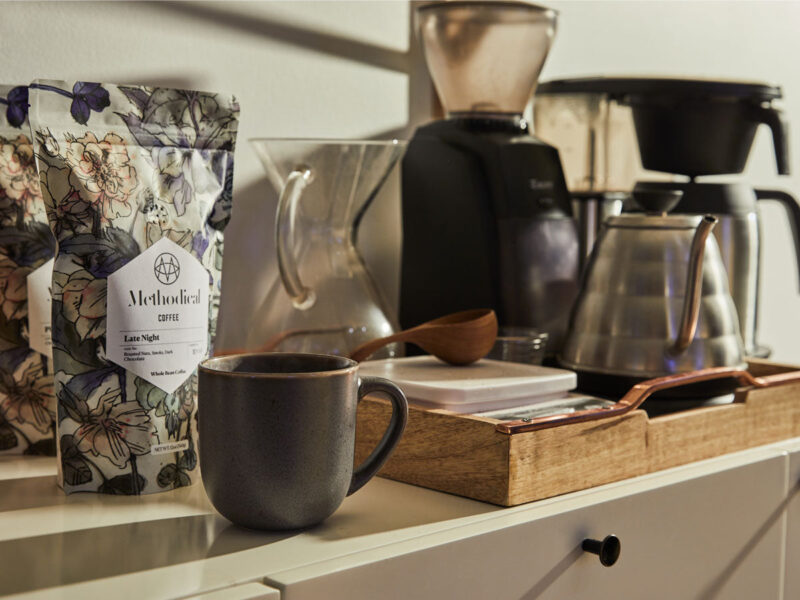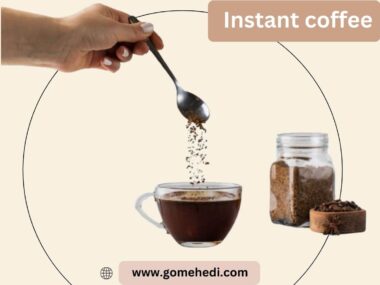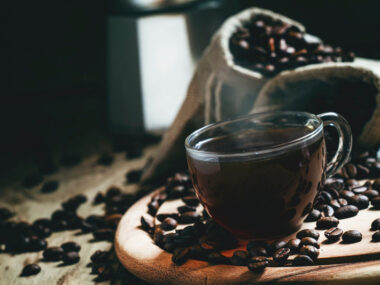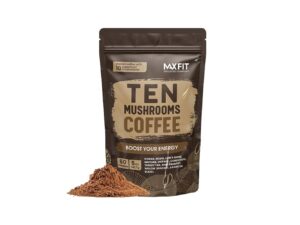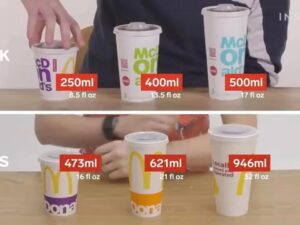The ideal amount of coffee grounds per cup is essential for a perfect brew. Learn how much coffee grounds per cup you need for bold, balanced flavor.
Coffee lovers know that the right coffee-to-water ratio makes a big difference. Too much coffee can make your drink bitter and too little can make it weak. Finding the perfect balance can seem tricky, but it’s actually quite simple. The key is understanding how much coffee grounds you need for each cup.
This can vary based on your taste preferences and the type of coffee you are using. In this blog post, we will dive into the details of measuring the right amount of coffee grounds per cup. This will help you achieve that perfect cup every time.

Credit: www.wikihow.com
Coffee Ground Basics
Brewing the perfect cup of coffee starts with understanding how much coffee grounds to use per cup. Coffee Ground Basics are essential for achieving that rich, aromatic flavor you crave. This section will explore the different types of coffee grounds and the importance of grind size.
Types Of Coffee Grounds
There are several types of coffee grounds, each with its unique characteristics. The type of coffee ground you use can affect the flavor, strength, and overall quality of your coffee. Here are some common types:
- Whole Bean: Coffee in its purest form. Grinding just before brewing ensures maximum freshness.
- Coarse Ground: Resembles sea salt. Ideal for French press and cold brew methods.
- Medium Ground: Comparable to sand. Suitable for drip coffee makers and pour-over methods.
- Fine Ground: Similar to table salt. Perfect for espresso machines and Aeropress.
- Extra Fine Ground: Almost powdery. Best for Turkish coffee.
Using the correct type of coffee ground impacts the flavor profile and extraction time. For instance, using coarse grounds in an espresso machine can result in under-extraction, making your coffee weak and sour. On the other hand, using fine grounds in a French press can lead to over-extraction, producing a bitter taste.
Grind Size Importance
The size of your coffee grind plays a crucial role in the brewing process. Grind size affects how water interacts with the coffee, impacting the extraction and flavor. Here’s why grind size matters:
| Grind Size | Brewing Method | Extraction Time |
|---|---|---|
| Coarse | French Press, Cold Brew | Long (4-12 minutes) |
| Medium | Drip Coffee Maker, Pour-Over | Medium (4-6 minutes) |
| Fine | Espresso, Aeropress | Short (1-2 minutes) |
| Extra Fine | Turkish Coffee | Very Short (30-60 seconds) |
Using the right grind size ensures optimal extraction. Under-extraction happens when coffee is ground too coarsely, leading to weak, acidic flavors. Over-extraction occurs with too fine grounds, resulting in a bitter taste.
For the best results, match your grind size to your brewing method. Experiment with different grind sizes to find your perfect cup. Remember, consistency is key. Invest in a good quality grinder to achieve uniform grounds.
Measuring Coffee Grounds
Measuring coffee grounds is crucial for making a great cup of coffee. Knowing how much coffee to use can change the taste and strength of your brew. Understanding the right amount helps you enjoy a balanced and flavorful cup every time.
Standard Ratios
The standard ratio of coffee to water is essential for a consistent brew. Typically, the golden ratio is about 1 to 2 tablespoons of ground coffee for every 6 ounces of water. This ratio can vary based on personal preference and the type of coffee maker you use. Here are some common guidelines:
- Drip Coffee Maker: Use 1-2 tablespoons per 6 ounces of water.
- French Press: Use 1 tablespoon per 4 ounces of water.
- Pour Over: Use 1 tablespoon per 5 ounces of water.
- Espresso: Use 1 tablespoon per 2 ounces of water.
These ratios serve as a starting point. Adjust the measurements based on your taste. If the coffee is too strong, reduce the amount of coffee grounds. If it’s too weak, add a bit more.
| Coffee Maker | Coffee Grounds | Water |
|---|---|---|
| Drip Coffee Maker | 1-2 tablespoons | 6 ounces |
| French Press | 1 tablespoon | 4 ounces |
| Pour Over | 1 tablespoon | 5 ounces |
| Espresso | 1 tablespoon | 2 ounces |
Use these guidelines to start, but remember to experiment. Your perfect cup may need a bit more or less coffee. Find what works best for you.
Using A Scale
Using a scale to measure coffee grounds offers greater accuracy. A scale helps you achieve the same taste each time you brew. Here are steps to use a scale for measuring coffee:
- Turn on your scale and set it to grams.
- Place your empty coffee filter or container on the scale.
- Press the tare button to reset the scale to zero.
- Add coffee grounds until you reach the desired weight.
For most brews, a good starting point is a ratio of 1:16. This means 1 gram of coffee for every 16 grams of water. Here are some common weights to use:
- Drip Coffee: 15 grams of coffee for 240 grams of water.
- French Press: 30 grams of coffee for 480 grams of water.
- Pour Over: 20 grams of coffee for 320 grams of water.
- Espresso: 18 grams of coffee for 36 grams of water.
Using a scale ensures each cup of coffee has the same strength and flavor. It removes the guesswork and helps you perfect your brew. Start with these measurements and adjust according to your taste.
Brewing Methods
Making the perfect cup of coffee starts with knowing how much coffee grounds to use. Different brewing methods require different amounts. Let’s explore how much coffee grounds you need for some popular methods.
French Press
The French Press is a classic way to brew coffee. It’s known for its rich flavor. The right amount of coffee grounds is essential. Here’s a simple guide:
- Standard Ratio: Use one to two tablespoons of coffee grounds per six ounces of water.
- Strong Coffee: Use two tablespoons per six ounces of water.
- Milder Coffee: Use one tablespoon per six ounces of water.
For a French Press, the coffee grounds should be coarse. This prevents them from passing through the mesh filter.
| Water (oz) | Standard Coffee Grounds (tbsp) | Strong Coffee Grounds (tbsp) | Mild Coffee Grounds (tbsp) |
|---|---|---|---|
| 6 | 1-2 | 2 | 1 |
| 12 | 2-4 | 4 | 2 |
| 18 | 3-6 | 6 | 3 |
Start with the standard ratio. Adjust to taste. The French Press method is forgiving. Experiment until you find your perfect cup.
Drip Coffee Maker
The Drip Coffee Maker is common in many homes. It’s easy to use. The amount of coffee grounds you need depends on your taste and machine size. Here’s a guide:
- Standard Ratio: Use one to two tablespoons of coffee grounds per six ounces of water.
- Medium Coffee: Use 1.5 tablespoons per six ounces of water.
- Strong Coffee: Use two tablespoons per six ounces of water.
- Weak Coffee: Use one tablespoon per six ounces of water.
For Drip Coffee Makers, use medium grind coffee. This prevents over-extraction or under-extraction.
| Cups of Water | Standard Coffee Grounds (tbsp) | Medium Coffee Grounds (tbsp) | Strong Coffee Grounds (tbsp) | Weak Coffee Grounds (tbsp) |
|---|---|---|---|---|
| 1 | 1-2 | 1.5 | 2 | 1 |
| 4 | 4-8 | 6 | 8 | 4 |
| 8 | 8-16 | 12 | 16 | 8 |
Begin with the standard ratio. Adjust to your liking. The Drip Coffee Maker offers convenience. Find your perfect balance with these guidelines.
Personal Preferences
Everyone has their own way to brew the perfect cup of coffee. Personal preferences play a huge role in deciding how much coffee grounds to use per cup. Some like it strong, others prefer a milder flavor. Let’s explore the balance between strength and flavor and how adjusting the coffee-to-water ratio can help you find your perfect brew.
Strength Vs. Flavor
When brewing coffee, the amount of grounds you use directly affects both strength and flavor. Strength refers to the concentration of coffee, while flavor encompasses the aroma and taste profile.
Here are a few tips to find the right balance:
- Strong Coffee: Use more coffee grounds. Typically, 2 tablespoons of coffee per 6 ounces of water.
- Mild Coffee: Use fewer coffee grounds. Around 1 tablespoon per 6 ounces of water.
Remember, different types of coffee beans yield different flavors. For instance, Arabica beans have a smoother taste, whereas Robusta beans are more bitter. Adjusting your grounds can highlight these unique flavors.
Consider the following table for a quick reference:
| Strength | Grounds per 6 oz Water |
|---|---|
| Strong | 2 tablespoons |
| Mild | 1 tablespoon |
Experiment with different amounts to find your perfect cup. Taste is subjective, so what works for one person might not work for another.
Adjusting Ratios
Adjusting the coffee-to-water ratio can fine-tune your brew. If your coffee tastes too strong or too weak, changing the ratio is an easy fix. Here are some guidelines:
- Standard Ratio: 1 to 2 tablespoons of coffee per 6 ounces of water. This suits most tastes.
- Weaker Coffee: Use 1 tablespoon of coffee per 8 ounces of water.
- Stronger Coffee: Use 2 tablespoons of coffee per 4 ounces of water.
Use a kitchen scale for precise measurements. Weighing your coffee grounds ensures consistency. For example, 1 tablespoon of coffee grounds weighs about 5 grams.
If you need help with ratios, here’s a simple table:
| Coffee Grounds | Water |
|---|---|
| 1 tablespoon | 8 ounces |
| 2 tablespoons | 4 ounces |
Start with the standard ratio and tweak it to match your taste. Small changes can have a big impact. Enjoy the process of finding your perfect cup of coffee.
Common Mistakes
Determining how much coffee grounds per cup can be tricky. Many people make mistakes that affect the taste and quality of their coffee. Understanding common mistakes can help you brew the perfect cup every time.
Over Or Under Brewing
One common mistake is over or under brewing your coffee. Both can ruin the flavor.
Over brewing happens when coffee grounds stay in contact with water for too long. This extracts too many bitter compounds. The result is a strong, bitter taste. On the other hand, under brewing is when the coffee grounds do not stay in contact with water long enough. This leads to a weak, sour taste.
To avoid over or under brewing:
- Use a timer when brewing your coffee.
- Follow the recommended brewing time for your coffee maker.
- Adjust the brewing time based on your taste preference.
The recommended brewing times for different coffee makers are:
| Coffee Maker | Brewing Time |
|---|---|
| Drip Coffee Maker | 4-5 minutes |
| French Press | 4 minutes |
| Espresso Machine | 25-30 seconds |
Wrong Grind Size
The grind size of your coffee grounds also affects the taste. Using the wrong grind size can lead to over or under extraction.
Different brewing methods require different grind sizes. Using the wrong size can affect the contact time between water and coffee grounds. This impacts the flavor and strength of your coffee.
Here is a quick guide to grind sizes:
| Brewing Method | Grind Size |
|---|---|
| French Press | Coarse |
| Drip Coffee Maker | Medium |
| Espresso Machine | Fine |
To get the right grind size:
- Use a coffee grinder with adjustable settings.
- Match the grind size to your brewing method.
- Experiment with different grind sizes to find what works best for you.
Using the correct grind size helps ensure a balanced extraction. This results in a flavorful and satisfying cup of coffee.

Credit: www.pinterest.com
Taste Testing
Finding the perfect balance of coffee grounds per cup can be a bit of a journey. Taste testing is an essential part of this process, allowing you to discover what suits your palate best. In this blog post, we’ll guide you through experimenting with different ratios and finding your ideal cup of coffee.
Experimenting With Ratios
Experimenting with coffee ratios is both fun and rewarding. To start, you’ll need a few basic tools: a kitchen scale, a measuring spoon, and your preferred coffee beans. Here’s a simple guide to get you started:
- Use a standard ratio of 1:15, which means 1 gram of coffee to 15 grams of water.
- If you like stronger coffee, try a 1:12 ratio.
- For a milder brew, use a 1:18 ratio.
To make things clearer, here’s a table showing the different amounts of coffee grounds and water you might use:
| Ratio | Coffee Grounds (grams) | Water (grams) |
|---|---|---|
| 1:12 | 20 | 240 |
| 1:15 | 20 | 300 |
| 1:18 | 20 | 360 |
Start with the 1:15 ratio. Brew your coffee and take a sip. Note the flavors and strength. Then, adjust the ratio and repeat the process. Keep track of your findings.
Finding Your Ideal Cup
Finding your ideal cup is an adventure. Once you’ve experimented with different ratios, it’s time to fine-tune your preferences. Here are some tips:
- Take Notes: Write down your thoughts on each cup. Note the ratio, brew time, and flavor.
- Adjust One Variable at a Time: Change only one element per test, like the amount of coffee grounds or water.
- Consider Different Beans: Different beans can affect the taste. Try various types to see what you like.
Some people prefer a stronger coffee in the morning. Others might enjoy a lighter cup in the afternoon. Your mood and time of day can influence your preference.
Below is a sample table to help you keep track of your findings:
| Ratio | Brew Time | Flavor Notes | Comments |
|---|---|---|---|
| 1:15 | 4 minutes | Balanced, smooth | Good for mornings |
| 1:12 | 3.5 minutes | Strong, bold | Too strong for evening |
| 1:18 | 5 minutes | Light, mild | Perfect for afternoon |
Remember, your ideal cup is personal. It’s about what you enjoy. Happy brewing and tasting!
Coffee To Water Ratio
Getting the coffee-to-water ratio right can make or break your coffee experience. A perfect balance ensures a flavorful and aromatic cup. Too much coffee, and it becomes bitter; too little, and it lacks depth. Understanding the ideal ratio helps in crafting that perfect brew every time.
General Guidelines
For a standard cup of coffee, the general guideline is to use a ratio of 1:15 to 1:18. This means for every gram of coffee, you should use 15 to 18 grams of water. This ratio provides a balanced flavor, not too strong and not too weak.
Here’s a simple table to illustrate:
| Coffee (grams) | Water (grams) |
|---|---|
| 10 | 150-180 |
| 20 | 300-360 |
| 30 | 450-540 |
For ease, many use tablespoons and cups. One tablespoon of coffee usually weighs about 5 grams. So, for one cup (240 grams of water), you would need around 13 to 16 grams of coffee.
Here are some quick tips:
- Use fresh, quality coffee beans.
- Grind your coffee just before brewing.
- Use clean, filtered water.
- Adjust based on personal taste preference.
Specialty Coffees
Specialty coffees, like espresso or French press, require different ratios. Each method highlights different aspects of the coffee bean.
Espresso: For espresso, the coffee-to-water ratio is much higher, usually 1:2. This means for every gram of coffee, you use two grams of water. A typical shot of espresso uses about 18 grams of coffee with 36 grams of water.
French Press: The French press method uses a ratio of 1:12 to 1:15. This means for every gram of coffee, use 12 to 15 grams of water. For a 1-liter French press, you would use around 65 to 80 grams of coffee.
Here’s a quick reference:
| Method | Coffee (grams) | Water (grams) |
|---|---|---|
| Espresso | 18 | 36 |
| French Press | 65-80 | 1000 |
Each method has its own unique charm. Experiment with different ratios to find what suits your taste best.
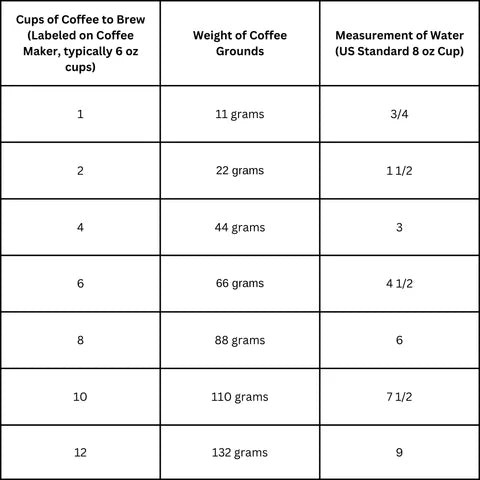
Credit: www.drivencoffee.com
Storage Tips
Introduction paragraph about How Much Coffee Grounds Per Cup and Storage Tips…
Keeping Grounds Fresh
To enjoy the best cup of coffee, keeping your coffee grounds fresh is crucial. Stale grounds can ruin the taste of your coffee. Here are some tips to ensure your grounds stay fresh:
- Store in an airtight container: Air exposure can make coffee grounds go stale. Use containers with tight-fitting lids.
- Keep away from heat and light: Both heat and light can degrade coffee grounds. Store your container in a cool, dark place.
- Avoid moisture: Moisture can spoil coffee grounds. Ensure your container is dry before adding coffee grounds.
- Use within two weeks: For the best flavor, use your coffee grounds within two weeks of opening.
Here’s a simple table to summarize:
| Storage Tip | Reason |
|---|---|
| Airtight container | Prevents air exposure |
| Cool, dark place | Prevents heat and light degradation |
| Dry container | Prevents moisture spoilage |
| Use within two weeks | Ensures best flavor |
Avoiding Contamination
Contamination can alter the flavor of your coffee grounds. To prevent this, follow these guidelines:
- Separate storage: Store your coffee grounds away from strong-smelling items like spices and cleaning products.
- Clean utensils: Always use clean scoops and spoons to handle your coffee grounds. Dirty utensils can introduce unwanted flavors.
- Avoid touching: Try not to touch the coffee grounds with your hands. Oils and residues from your skin can contaminate them.
- Label containers: If you have multiple types of coffee, label each container. This prevents mixing and keeps flavors distinct.
Here’s a quick checklist to ensure you avoid contamination:
- Store away from strong smells.
- Use clean scoops and spoons.
- Avoid touching grounds with hands.
- Label each container.
By following these storage tips, you can enjoy fresh and flavorful coffee every time. Remember, proper storage is key to maintaining the quality of your coffee grounds.
Frequently Asked Questions
How Much Coffee Grounds For One Cup?
For one cup of coffee, use about 1 to 2 tablespoons of coffee grounds. Adjust to your taste preference.
What’s The Best Coffee-to-water Ratio?
The ideal coffee-to-water ratio is 1:16. This means 1 gram of coffee for every 16 grams of water.
Can I Use More Coffee Grounds Per Cup?
Yes, you can. Using more coffee grounds will result in a stronger brew. Adjust to your taste.
Does Grind Size Affect Coffee Strength?
Yes, grind size impacts coffee strength. Finer grinds produce stronger coffee, while coarser grinds yield a milder brew.
Conclusion
Finding the right coffee grounds per cup is crucial for great flavor. Experiment with the ratio to match your taste preference. Typically, use one to two tablespoons of coffee grounds per six ounces of water. Adjust based on strength and type of coffee.
Freshness matters, so grind your coffee beans just before brewing. Remember, quality beans make a difference. Enjoy your perfect cup of coffee every day!
